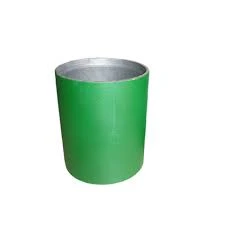- Afrikaans
- Albanian
- Amharic
- Arabic
- Armenian
- Azerbaijani
- Basque
- Belarusian
- Bengali
- Bosnian
- Bulgarian
- Catalan
- Cebuano
- Corsican
- Croatian
- Czech
- Danish
- Dutch
- English
- Esperanto
- Estonian
- Finnish
- French
- Frisian
- Galician
- Georgian
- German
- Greek
- Gujarati
- Haitian Creole
- hausa
- hawaiian
- Hebrew
- Hindi
- Miao
- Hungarian
- Icelandic
- igbo
- Indonesian
- irish
- Italian
- Japanese
- Javanese
- Kannada
- kazakh
- Khmer
- Rwandese
- Korean
- Kurdish
- Kyrgyz
- Lao
- Latin
- Latvian
- Lithuanian
- Luxembourgish
- Macedonian
- Malgashi
- Malay
- Malayalam
- Maltese
- Maori
- Marathi
- Mongolian
- Myanmar
- Nepali
- Norwegian
- Norwegian
- Occitan
- Pashto
- Persian
- Polish
- Portuguese
- Punjabi
- Romanian
- Russian
- Samoan
- Scottish Gaelic
- Serbian
- Sesotho
- Shona
- Sindhi
- Sinhala
- Slovak
- Slovenian
- Somali
- Spanish
- Sundanese
- Swahili
- Swedish
- Tagalog
- Tajik
- Tamil
- Tatar
- Telugu
- Thai
- Turkish
- Turkmen
- Ukrainian
- Urdu
- Uighur
- Uzbek
- Vietnamese
- Welsh
- Bantu
- Yiddish
- Yoruba
- Zulu
pipe threader
The Essential Guide to Pipe Threaders Tools for Every Plumber
When it comes to plumbing, one of the most critical tasks is creating secure and leak-proof connections between pipes. This is where the pipe threader comes into play. A pipe threader is a specialized tool designed to cut threads onto the ends of pipes, allowing for the attachment of fittings and other plumbing components. This article explores the importance of pipe threaders, their types, and how to use them effectively.
The Importance of Pipe Threaders
Pipe threaders are indispensable in the plumbing profession. They ensure that connections between pipes are both strong and reliable, which is crucial in preventing leaks and ensuring overall system integrity. In many plumbing applications, especially in industrial settings, custom lengths of pipe must be created with precise threading to fit specific requirements. A properly threaded pipe can withstand high-pressure conditions, reducing the risk of catastrophic failures.
Types of Pipe Threaders
There are several types of pipe threaders available, each designed for different applications and user needs.
1. Manual Pipe Threaders These are typically used for smaller jobs and involve a handle that the user rotates to cut threads manually. These are ideal for tight spaces or smaller pipes, providing excellent control over the threading process. Manual threaders are portable and do not require electricity, making them a popular choice for DIY enthusiasts and small plumbing tasks.
2. Electric Pipe Threaders For larger jobs or when speed is of the essence, electric pipe threaders are the way to go. These machines provide a high level of efficiency and can handle larger pipes swiftly. Electric models often come with various attachments, allowing for threading, cutting, and even reaming in one device. They are essential in commercial plumbing where time and volume are a consideration.
3. Pipe Threading Machines These are larger, industrial-grade machines typically found in workshops. They can handle heavy-duty threading tasks and are often used for manufacturing and production purposes. While these machines require a more significant investment, their durability and efficiency can save time and labor costs in the long run.
How to Use a Pipe Threader
pipe threader

Using a pipe threader, whether manual or electric, involves several essential steps
1. Prepare the Pipe Before threading, ensure that the end of the pipe is clean and free of any burrs or debris. This helps prevent damage to the threading tool and ensures a smooth finish.
2. Select the Fitting Choose the appropriate die for the size of the pipe you are threading. Different dies create different thread sizes, so be sure to check compatibility.
3. Align the Pipe Insert the pipe into the threader, ensuring it is secured properly. Misalignment can lead to uneven threads, which will compromise the connection.
4. Thread the Pipe For manual threaders, turn the handle in a clockwise direction. For electric threaders, follow the machine’s operational instructions. It’s essential to apply consistent pressure to ensure even threading.
5. Inspect the Threads Once the threading is complete, carefully inspect the threads for uniformity. Any irregularities can result in leaks, so don’t hesitate to re-thread if necessary.
6. Clean Up Remove any metal shavings or chips produced during the threading process. This keeps your workspace tidy and reduces the risk of injury.
Conclusion
In summary, pipe threaders are essential tools for anyone working in plumbing, from hobbyists to experienced professionals. By understanding the different types available and how to use them effectively, you can ensure that your plumbing projects are completed with precision and reliability. A well-threaded pipe is the foundation of a successful and leak-free plumbing system.
-
Tubing Pup Joints: Essential Components for Oil and Gas OperationsNewsJul.10,2025
-
Pup Joints: Essential Components for Reliable Drilling OperationsNewsJul.10,2025
-
Pipe Couplings: Connecting Your World EfficientlyNewsJul.10,2025
-
Mastering Oilfield Operations with Quality Tubing and CasingNewsJul.10,2025
-
High-Quality Casing Couplings for Every NeedNewsJul.10,2025
-
Boost Your Drilling Efficiency with Premium Crossover Tools & Seating NipplesNewsJul.10,2025







